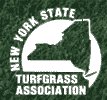 Your Westchester, NY lawn and landscape is the welcome mat to your home—it makes the first impression on guests, and it’s where you go to relax, entertain and play. But your lawn is also a lively ecosystem and home to a range of insects and other pests, not all of them bad. For example, beneficial insects like nematodes can actually help fight other damaging pests and work as a built-in army. But, there are also some bad guys that, without proper prevention, can infest your grass and cause costly, unsightly damage.
Your Westchester, NY lawn and landscape is the welcome mat to your home—it makes the first impression on guests, and it’s where you go to relax, entertain and play. But your lawn is also a lively ecosystem and home to a range of insects and other pests, not all of them bad. For example, beneficial insects like nematodes can actually help fight other damaging pests and work as a built-in army. But, there are also some bad guys that, without proper prevention, can infest your grass and cause costly, unsightly damage.
It’s amazing how fast a living thing so small can work, and how quickly an investment in your landscape can be spoiled when effective insect control is not in place.
The good news is, you can boot damaging pests from your New York and Connecticut yard with a tailored lawn pest control service that targets the “most wanted” (or, should we say unwanted) in our region. Specifically, we’re talking about these five pests that can destroy your grass if you ignore the signs that they are hanging out on your property.
With proper pest prevention and insect control, you can easily stop an infestation from occurring, and preserve the beauty and health of your grass and plants. So, let’s touch on the most common pests Neave Lawn Care specialists identify in your neighborhood’s property’s, and how we treat them safely and effectively, with attention to our impact on the environment.
White Grubs
The grub is probably the most common lawn insect issue homeowners in Connecticut and New York face, and the white grub is most common. It lives underground, so you won’t see them—but birds, skunks and armadillos do, and they will rip up your yard in pursuit of a white grub feast. (We know, not your idea of a tasty buffet.)
White grubs are C-shaped larvae of beetles, and they spend winters in the soil and emerge in spring, when they feed on grass roots. By early summer, you might notice the common signs: spongy or discolored grass, and damage from animals feeding on grubs.
>>Treating Grubs: Grubs should be controlled in early summer, just before they hatch and begin causing extensive damage. Prevention is more effective than curative treatments, however, doing nothing is not an option if you plan to keep your landscape in good health. Lawns with a history of grub activity—or nearby landscapes that are affected—should be treated preventively on an annual basis.
Leather Jackets
Leather Jackets resemble mosquitoes—they’re light brown with long legs. They love sunlight and generally appear in late summer. The problem with this pest is how they lay eggs in the yard, which results in hatched larvae that feed on grassroots and crowns.
Signs of leather jacket activity include grass discoloration and bare spots. A leather jacket infestation can be mistaken for chafer grubs, so proper pest identification is critical for treating this turf insect effectively.
>>Treating Leather Jackets: Biological controls containing nematodes can help eliminate leather jacket larvae, and damaged grass should be replaced. Also, adopting cultural practices like proper watering, mowing and lawn maintenance can reduce the likelihood of a leather jacket infestation.
Chinch Bugs
Chinch bugs feed on grass juices and live above the soil line. As soon as the eggs hatch, the insects start feeding and can cause brown patches to develop in your yard. You might figure those spots are because of dry weather and lack of water—conditions that chinch bugs love. Other indications of chinch bug activity include straw-colored grass areas that can grow in size, even when you water the turf.
>>Treating Chinch Bugs: Preventive insect control helps reduce chinch bug populations. Application timing is key, with early spring treatments delivering the best results. Damaged turf should be fertilized and watered. Bare spots should be reseeded.
Cutworms
Cutworms moths lay eggs at night—they overwinter in the soil, only to appear in spring. The issue with cutworms is how they can spread into landscape beds and also damage plants. A cutworm issue can turn into a much bigger problem on your property if the pest is not effectively controlled. One way to determine if cutworms are an issue is to pour soapy water over a damaged patch of grass. After about 10 minutes, the pests will emerge.
>>Treating Cutworms: Controlling thatch and ensuring that your landscape has the proper nutrients and fertilization to grow strong can reduce the likelihood of a cutworm infestation. These simple lawn maintenance practices go a long way toward preventing insects, in general. However, if a cutworm problem is identified, it should be treated with insecticide—and preventive treatments can help mitigate the future activity.
Sod Webworms
Also referred to as lawn moths, sod webworms flit around over grass at dusk and hang out in groups. They cause damage when webworm caterpillars chew off grass blades, leaving behind ragged stubble. Over time, sod webworms can create extensive damage and degrade the appearance of your grass. Birds sometimes search for webworm larvae, so you might notice beak marks where they’ve punctured holes in the soil looking for a snack.
>>Treating Sod Webworms: Regular watering and cultural practices like aeration and dethatching can create a less attractive environment for sod webworms to reproduce and feed. Sod webworms love to feed on the thatch. Insecticides applied to damaged turf areas where larvae are eating can reduce the impact of a sod webworm issue.
Have the Experts Detect and Treat Lawn Insects
Properly identifying lawn insects is critical for maintaining a healthy, beautiful property. It takes an expert eye to discern the difference between pests, and to prescribe a customized prevention and treatment plan that will mitigate landscape damage.
Get a free lawn assessment and meet with a Neave Lawn Care specialist, who will walk your property with you and share strategies for getting a lush, attractive grass and keeping it that way.
Call us in Westchester, NY at 914-271-7996, in Connecticut at 203-212-4800 and in Hudson Valley at 845-463-0592. Or fill out our contact form and we will get in touch with you.






















